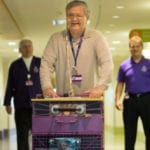 Mysteries
Mysteries  Mysteries
Mysteries  Creepy
Creepy 10 Scary Tales from the Middle Ages That’ll Keep You up at Night
 Humans
Humans 10 One-of-a-kind People the World Said Goodbye to in July 2024
 Movies and TV
Movies and TV 10 Holiday Movies Released at Odd Times of the Year
 Politics
Politics 10 Countries Where Religion and Politics Are Inseparable
 Weird Stuff
Weird Stuff 10 Freaky Times When Famous Body Parts Were Stolen
 Miscellaneous
Miscellaneous 10 Interesting Things Manufacturers Stopped Making and Why
 Gaming
Gaming 10 Funny Tutorials in Games
 History
History 10 Fascinating Little-Known Events in Mexican History
 Facts
Facts 10 Things You May Not Know about the Statue of Liberty
 Mysteries
Mysteries 10 Devastating Missing Child Cases That Remain Unsolved
 Creepy
Creepy 10 Scary Tales from the Middle Ages That’ll Keep You up at Night
 Humans
Humans 10 One-of-a-kind People the World Said Goodbye to in July 2024
Who's Behind Listverse?

Jamie Frater
Head Editor
Jamie founded Listverse due to an insatiable desire to share fascinating, obscure, and bizarre facts. He has been a guest speaker on numerous national radio and television stations and is a five time published author.
More About Us Movies and TV
Movies and TV 10 Holiday Movies Released at Odd Times of the Year
 Politics
Politics 10 Countries Where Religion and Politics Are Inseparable
 Weird Stuff
Weird Stuff 10 Freaky Times When Famous Body Parts Were Stolen
 Miscellaneous
Miscellaneous 10 Interesting Things Manufacturers Stopped Making and Why
 Gaming
Gaming 10 Funny Tutorials in Games
 History
History 10 Fascinating Little-Known Events in Mexican History
 Facts
Facts 10 Things You May Not Know about the Statue of Liberty
10 Uplifting Stories To Get You Through The Week (12/2/18)
We here at Listverse want to help you end the week with a smile, so we’ve gathered all the news that might lift your spirits into one list. This is where we offer you a nice mix of feel-good stories combined with significant achievements and tales of true togetherness. If weird and wacky is more your thing, check out the offbeat list.
This week, we congratulate the Chicken Whisperer and applaud the efforts of a hardworking spider mom. Although we look at some impressive discoveries made by archaeologists, we also turn to the future as scientists land a probe on Mars and develop a revolutionary new type of plane.
10 A Plane With No Moving Parts
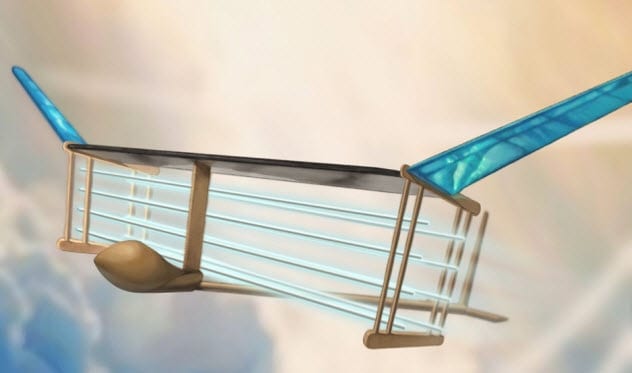
Engineers from the Massachusetts Institute of Technology (MIT) achieved the first-ever flight of an airplane with no moving parts.
The craft is powered by ionic wind, an airflow which is induced by electrostatic forces. It is only a prototype, weighing 2.4 kilograms (5.4 lbs) with a 4.9-meter (16 ft) wingspan.
It looks like a glider, but it uses 40,000 volts of electricity created by positively and negatively charged electrodes to generate an electric current of nitrogen ions. As these ions turn from positive to negative and collide with neutral air molecules, this creates the wind that gives the airplane flight.[1]
The concept itself has been around for over 50 years, but it has never been successfully applied to an aircraft. Of course, the technology is nowhere near capable of carrying a human into the air, let alone being used for commercial flight.
However, MIT professor Steven Barrett believes it can prove to be a real boon for drones, which are becoming increasingly commonplace. As the plane has no propellers, engine, or any other mechanical parts, it is completely silent.
9 The Professional Do-Gooder

A man who opened his motel doors to victims of Hurricane Florence now has turned into a full-time humanitarian after receiving numerous donations of cash, goods, and services.
Jaret Hucks first made the news back in September. He owns the Midtown Inn and Cottages in Myrtle Beach, South Carolina. He allowed evacuees to stay in his motel following flooding from Hurricane Florence. In total, he gave away over 1,000 free nights or $50,000 worth of business because, in his own words, his mother taught him to “love thy neighbor.”
All the extra media attention garnered Hucks a lot of kudos but also inspired others to share his generosity. People started bringing him food, clothes, diapers, and other essentials which he distributed among evacuees staying at his motel. Others simply gave money.
Even now, a few months after the fact, donations are still coming in. Hucks has turned into the city’s good Samaritan who uses all his resources to help the downtrodden people of Midtown get back on their feet.[2]
8 Ancient Art Or Astronomy?
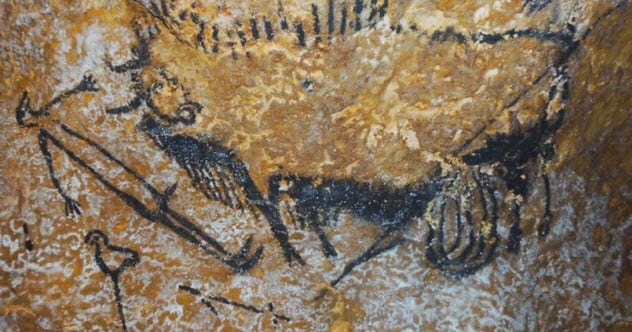
A new study by researchers from the Universities of Edinburgh and Kent suggests that some of the world’s oldest, most famous cave paintings are actually scenes that were used to mark astronomical events from tens of thousands of years ago.
The same team indicated last year that stone carvings found at the ruins of Gobekli Tepe temple in Turkey showed a comet strike which hit Earth approximately 13,000 years ago and started a mini ice age known as the Younger Dryas. Now they are suggesting that certain prehistoric paintings inside the famed Lascaux Cave in France were signs arranged to record another significant astronomical event.[3]
Specifically, they are referring to a collection of images known as the Shaft Scene. They show a man who appears to be dying in front of a gutted animal, most likely an aurochs. Nearby are three other animal images which show a bird, a horse head, and something that resembles a rhino.
At first glance, the Shaft Scene could depict a hunt gone wrong, but researchers opine that the images could be symbols for constellations during equinox. Given the approximate date of the paintings, the team believes they would indicate a cataclysmic event that happened over 15,000 years ago.
Ice core analysis performed on Greenland glaciers indicates that Earth underwent a climate shift around 15,300 BC. But we have no evidence to suggest what might have caused it.
7 Nurses Look After Their Own

A large group of nurses won the lottery and decided to donate their prize to those among them who needed it most.
Like many other assemblies of coworkers, the nurses from the neonatal intensive care unit (NICU) at Mercy Children’s Hospital in St. Louis, Missouri, regularly pool their money and buy lotto tickets. This time, they won. It wasn’t the Mega Millions jackpot, but it was still $10,000.
Then came a conundrum. There were 126 people in the group. Split evenly after taxes, they each would have received $56. Therefore, they decided to do something with a little more impact and gave all the money to just two of them: nurse Gretchen Post and neonatologist Casey Orellana.[4]
Post had recently lost her teenage son to suicide, while Orellana had found out her husband had cancer. Both will be able to use the extra money to pay bills.
6 The Strange Odyssey Of Sinatra

A dog has been reunited with his family after a peculiar 18-month journey that saw him travel over 1,900 kilometers (1,200 mi) through the United States.
Back in March 2017, the Willis family from Brooklyn lost Sinatra, their blue-eyed husky. He had a tendency to sneak out of the house whenever opportunity afforded it, but he would usually return in an hour. That wasn’t the case this time. As the days turned into weeks turned into months, it became increasingly apparent to the Willis household that they would never see Sinatra again.[5]
A year and a half later, 13-year-old Rose Verrill was heading toward the bus stop when she was approached by the pugnacious pooch. This was in Seffner, a suburb of Tampa, Florida. How exactly Sinatra got there or what else he did during his 18-month absence will probably remain a mystery forever.
Rose took the husky home with her and attempted to find his owners. Fortunately, he had a chip, but the Verrills were convinced it had the wrong name and address after indicating that the dog came from Brooklyn. They called Lesmore Willis Jr. anyway. He was stunned to find out that Sinatra had ended up in Florida but grateful that he will be, once again, part of their family.
5 Chicken Whisperer To The Rescue
Police officer Patrick McGovern was teased but also praised after executing the daring fire rescue of a chicken.
McGovern was responding to a call of a shed fire in the yard of a residential home in Ossining, New York. The 35-year-old officer started moving propane tanks out of the way of the blaze when he spotted a chicken roaming around in the backyard.
Bodycam footage showed McGovern ushering the bird up some stairs before finally being able to grab it and take it to safety. The video ends with the officer proudly proclaiming to the owners: “I got your chicken!”
McGovern’s colleagues have not been terribly kind following the video going viral. He says that his Facebook page is full of jokes, and people call him the Chicken Whisperer.[6] The poultry protector doesn’t mind the teasing, though, and says he even wants a chicken of his own one day.
4 The Mummy Meets The Press
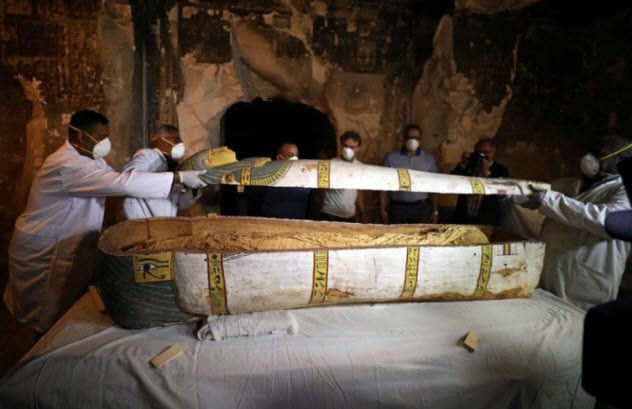
There have been quite a few discoveries about ancient Egypt made in recent times. You can add another one to the list as authorities allowed an intact sarcophagus to be opened in front of international media for the first time. The contents did not disappoint as archaeologists found a 3,000-year-old near-perfect mummy.[7]
At the start of the year, a mission led by French scholars discovered an undisturbed tomb in El-Asasef, a necropolis near Luxor. It took almost six months of work, but archaeologists finally managed to clear all the rubble which covered the tomb. Inside, they found around 1,000 Ushabti statues, five colored masks, and numerous paintings which adorned the walls and ceilings. Most interesting of all were two sarcophagi.
The two coffins are between 3,000 and 3,500 years old. The first mummy was identified as Thaw-Irkhet-if, an overseer of the mummification shrine. The other sarcophagus that was opened in front of the media contained the mummy of a woman, although her identity is still in doubt. Her name was believed to be Pouyou or Pouya, and the style of her sarcophagus suggested that it dated to the 18th dynasty.
The public unveiling is part of a concentrated effort by Egyptian authorities to reignite international interest in its ancient history and boost tourism.
3 A Heroic Encounter
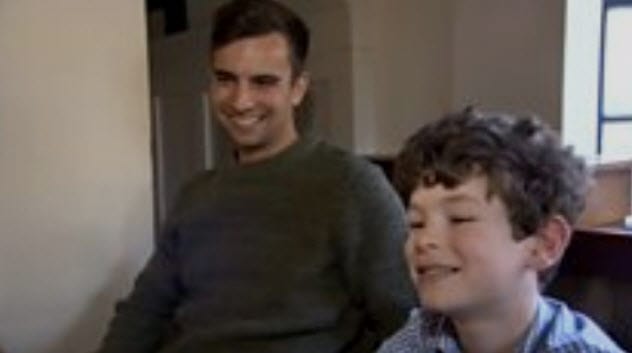
They say you should never meet your heroes, but that’s not true for Rupert Cross. The 10-year-old boy finally came face-to-face with the “superman” who donated the bone marrow that saved his life.
Four years ago, young Rupert Cross from Hemel Hempstead in Hertfordshire, England, was diagnosed with a rare blood disorder. He would need chemotherapy and a bone marrow transplant.
In Essex, Billy Higgins joined the queue to register as a donor as an excuse to chat up a woman he liked. However, when he did this, he discovered that he was a match for Rupert, who was in dire need of bone marrow.
Higgins went through with the operation, and the boy received the transplant he required. Now it is four years later, and Rupert has made a full recovery. He also got to meet Billy Higgins for the first time and refers to him as his “superman.” And to have happy endings all around, the woman Billy met in the donor register queue is now his wife.[8]
2 Spider Mom Of The Year
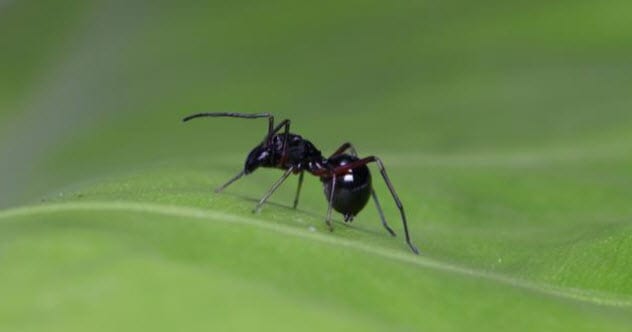
A female jumping spider has been discovered to have a dedication to motherhood previously only attributed to mammals. This includes nursing her offspring for multiple weeks by feeding them a kind of spider milk.
This kind of parental care is typically seen exclusively as the domain of mammals. According to a team led by conservation biologist Rui-Chang Quan from the Chinese Academy of Sciences, it should also extend to Toxeus magnus, a spider native to southeastern Asia. (The spider is pictured above. No, it is not an ant.)
Spiders have been known to make dedicated parents. Some species forgo feeding themselves to guard their eggs. Others carry their brood around on their backs. Some spider moms even allow themselves to be liquefied and consumed by their offspring. However, this is the first case of an arachnid that lactates to feed its young.
The liquid is nutritious, rich in fat and sugar, and has four times the protein of cow’s milk. It can be considered milk, depending on how loose you are with the definition of the word. There are other non-mammals such as birds or roaches that produce similar substances used to nourish their young.
Besides milk production, the spider also stands out through its patience with its brood. The mother will nurse her spiderlings for 20 days. Afterward, the young spiders will venture into the world and find food on their own, but they will still return to feed on their mother’s milk for another 20 days. Curiously, the mother will allow female offspring to continue feeding even after reaching sexual maturity but not the males.[9]
1 New InSight Into Mars
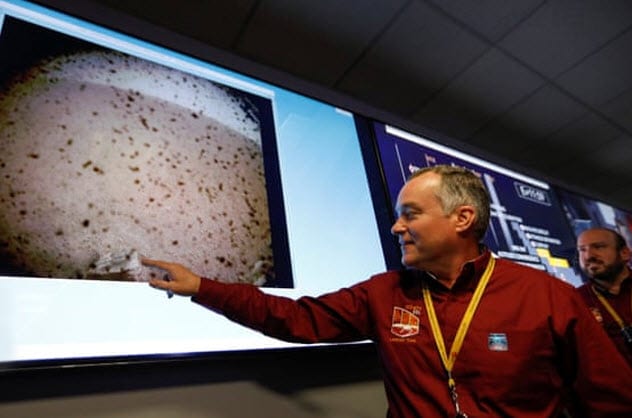
On Monday, NASA’s InSight lander made a successful touchdown on Mars.
After seven months and over 480 million kilometers (300 million mi) through space, the probe reached the Red Planet. It penetrated the atmosphere at 19,800 kilometers per hour (12,300 mph), cast off its heat shield, and deployed retro-thrusters and a parachute.
The probe actually missed the bull’s-eye of its landing target, but that might have worked out in its favor. It settled inside a flat crater filled in with soil, which is called a “hollow.”
While the terrain is rockier than desired, there aren’t any rocks near the lander that pose a threat and the sturdy surface is dense enough to support the weight of the instruments. Moreover, the material can be easily penetrated by the HP3 heat probe instrument. At the moment, the only drawback is that NASA isn’t sure where the lander is exactly.[10]
The InSight mission should last two years. It will mainly use three instruments to perform the first-ever interior mapping of a different planet in an attempt to better understand how rocky worlds in general (and Mars, specifically) were formed.
There is the aforementioned heat probe that will measure how fast heat rises through Mars. There is also an incredibly sensitive seismometer which will determine if the planet has any kind of seismic activity. Lastly, the probe has antennas to measure how much Mars wobbles on its axis. This should tell us if the Red Planet has a solid or molten core.
Read more offbeat stories you might have missed from November 25, 2018, and November 18, 2018.






